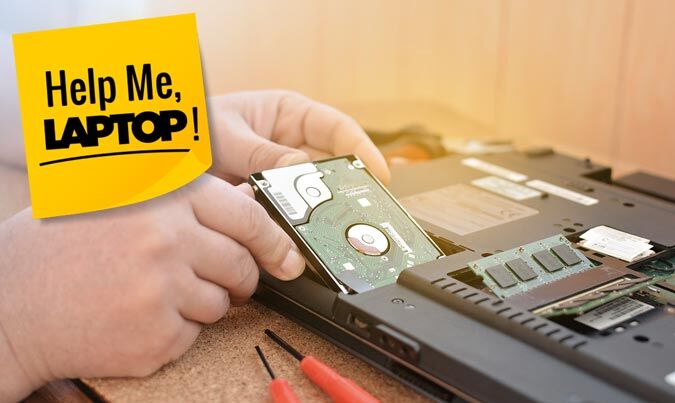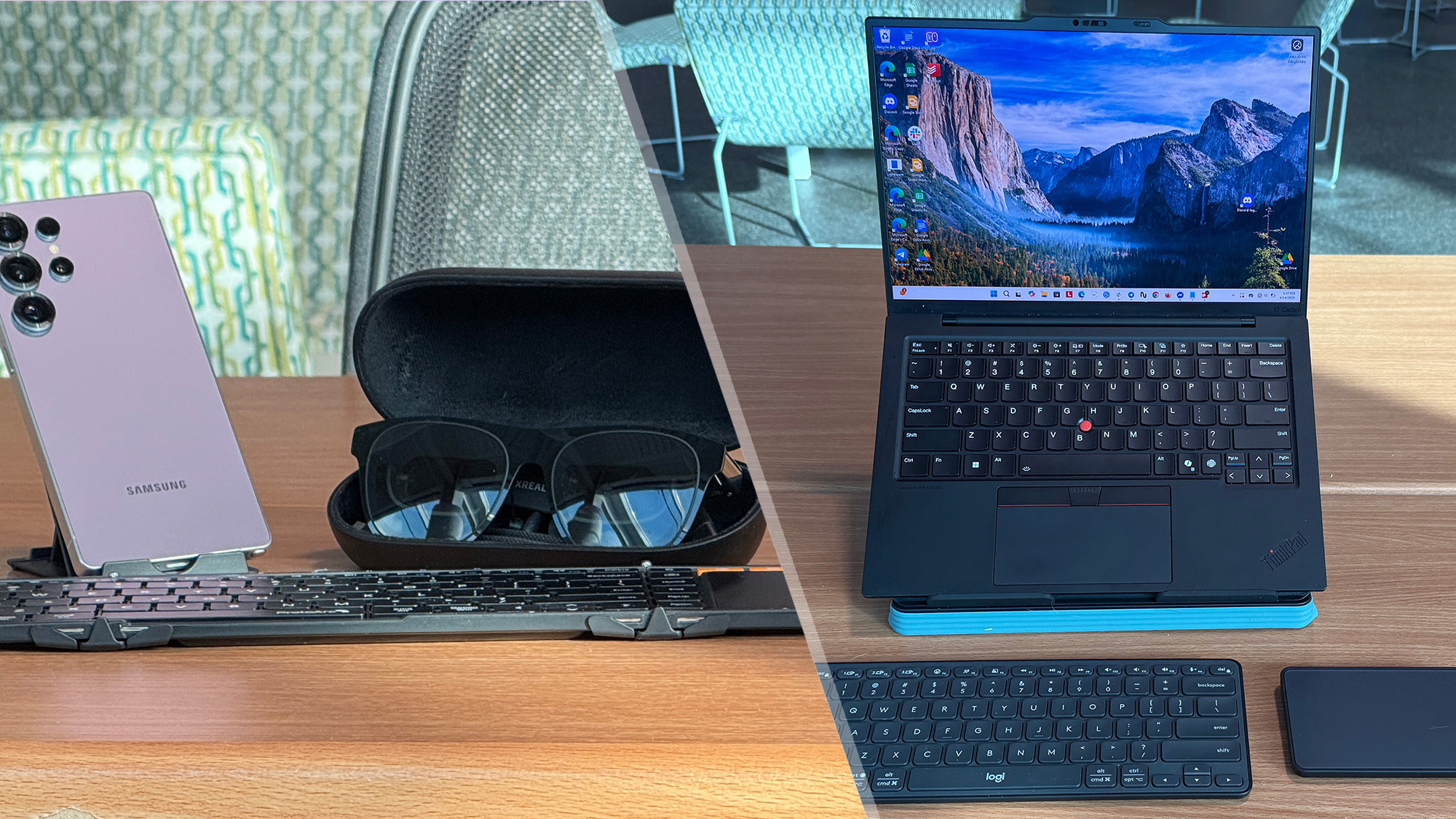Help Me, Laptop: My Hard Drive is Broken

Without a working hard drive (or SSD), your laptop is nothing more than a really bulky doorstop. So, if your hard drive fails and you can replace it with a working unit, you can save your laptop. Forum user anthonyharbolt has one laptop with a broken hard drive and another laptop with a working drive. Anthony is wondering whether it's possible to move the component from one computer to another. Our answer: It depends.
Whether you're trying to replace a broken hard drive or upgrade to a solid state drive (SSD), the first thing you need to do is find out whether your laptop is upgradeable. Most laptops that have mechanical hard drives provide a way for you to remove the bottom or open a door to access the hard drives. However, some systems are sealed shut and make it impossible to replace their drives.
There are three main ways to find out whether your laptop's hard drive is upgradable:
- Look at the bottom of your notebook. If you see a removable hatch, the hard drive is probably underneath it. If the hatch has a cylinder symbol on it, that means the hard drive is right there.
- Check the service manual for your laptop. Look at the support section of the manufacturer's website if you don't have a paper copy.
- Use the Crucial Advisor, an online tool that shows exactly what type of RAM and SSD your computer can accommodate. Crucial only shows you a list of compatible SSDs, but if your computer can take an SSD with a SATA connector, it can also take a hard drive (almost all hard drives from the last eight years are SATA).
Anthony will have to check both the new and the old computer to make sure that their drives are both accessible and that they use the same type of drive, most likely a 2.5-inch SATA hard drive.
If the broken laptop takes a 2.5-inch SATA drive and the working laptop does not, Anthony should consider buying a replacement drive. You can buy a 1TB Seagate notebook hard drive for just $49 or a speedy 250GB SSD for only $99.
Even if the two laptops use the same type of hard drive and both have accessible drive bays, Anthony will still have to install the operating system and all relevant drivers onto the computer that needs to be fixed. Unless the two laptops are the same make, model and configuration, simply moving the hard drive without reinstalling the OS will result in a computer that can't boot up.
If the broken laptop ran Windows, Anthony will need to get the correct install disc (or USB drive) that matches the Windows product key that shipped with the laptop. Most laptops don't come with a Windows disc or a restore disc, but, fortunately, Microsoft provides a way to download a Windows 7, Windows 8.1 or Windows 10 installer.
Stay in the know with Laptop Mag
Get our in-depth reviews, helpful tips, great deals, and the biggest news stories delivered to your inbox.
To download a new Windows installer from Microsoft, you just need to enter the appropriate product key. This is often printed on a sticker on the bottom of the laptop or on booklet that came with the laptop when you bought it. Microsoft provides instructions on the download page that show you how to write the installer onto a USB flash drive or DVD-R.
Image Credit: Shutterstock
Laptop Guide
- Laptop Buying Guide: 8 Essential Tips
- The Best & Worst Laptop Brands
- Laptop Tech Support Showdown: Undercover Report
- Should I Buy a Chromebook? Buying Guide and Advice
- Laptops with the Longest Battery Life
- Chromebooks vs. Windows 10 Laptops: What Should You Buy?
- Why You Shouldn't Buy a Touch-Screen Laptop
- Out of the Box Tips: Set Up Your New Laptop Like a Pro
- The Best Time to Buy a Laptop
- Chromebook vs. Tablet: Which Should You Buy?
- Laptop Buying Tips for Students
- 10 Key Features to Look for in Your Laptop
- How to Buy a 2-in-1 Laptop Hybrid
- USB Type-C FAQ: Everything You Need to Know
- How to Get Rid of Your Old Laptop
- Laptop Warranties: What They Cover
- Which CPU is Right For You?
- Which Laptop Features Are Worth the Money?
- Gaming Laptop Buying Guide: Find the Right Rig
- 10 Reasons Why Consumers Should Buy Business Laptops
- Which MacBook is Right for You?
- 5 Things to Look For in Your Next Laptop Keyboard
- How to Configure Your Laptop: Specs That Matter
- Which Graphics Card Do You Need?
- The Perfect Laptop? Here’s What It Should Have
- Why 78 Percent of Laptop Screens Suck
- A Guide to Computer Ports and Adapters
- 13 Ways to Make a Slow Laptop Faster
- How to Tell If You Can Upgrade Your Laptop
- Laptop Locks Guide: Do You Need One?
- 10 Features You Can Skip to Save Money

